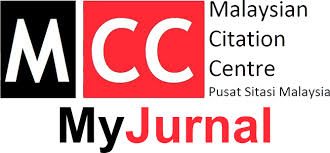A Study on Hybrid Power Vehicle for Electric Spraying Application
DOI:
https://doi.org/10.36877/aafrj.a0000103Abstract
Agriculture currently relies more on fossil fuel power for its mechanised operation. However, electric power system embedded in agriculture machinery enables farm electrification that provides numerous advantages such as improve work efficiency, ease of equipment control, reduce energy requirement and more ergonomic. This study aims to analyse a hybrid power farm vehicle configuration to enable the electrification of farm operation such as herbicide spraying. Two methodologies were presented for this study, which is simulation analysis and in-field test validation. HOMER software indicated that fraction of energy for herbicide spraying operation and charging the battery pack is 70% from solar energy and 30% from the rectifier engine output. The 20-Watt solar photovoltaic was selected due to installation area constraint on the farm utility vehicle and simulation results indicates the capacity is adequate for the intended purpose. Besides that, the simulation results also show the setup incurred lower energy cost up to 30% as compared to direct utilisation of the fossil fuel generator for the herbicide spraying. The in-field test study has validated the simulation results. The analysis indicated that the battery performance was consistent throughout the trial for almost two months of operation at the area covered for nearly 150 ha. The productivity of the machine obtained through the test was in average of 8 ha per day for a single man operation. In conclusion, the study shows that incorporation of solar power as opportunity charging could stabilise battery condition and will prolong battery health. The results also indicate that electrification of the farm equipment and its application could bring the desired positive result in farm activity. Thus, a more sustainable development approach of agriculture practice could be met.
References
Abdelhamid, M., Rhodes, K., Christen, E. & Kok, D. 2018. Analysis and Opportunities for Solar Photovoltaics Technologies on Electrified Vehicles. SAE Technical Papers, hlm.Vol. 2018-April. SAE International. doi:10.4271/2018-01-0426
Abdelhamid, M., Singh, R. & Imtiaz Haque. 2012. Role of PV generated DC power in transport sector: Case study of plug-in EV. Renewable Energy, 16(1), 1–7. doi:10.1016/j.rser.2010.07.062
Awaludin, A., Salim, S., Salim, S., Halim, A., Abidin, Z. & Ngah, M. R. 2015. Performance Study of an Oil Palm Fresh Fruit Bunch Three Wheeler Evacuation Machine. The Online Journal of Science and Technology, 5(2), 46–53.
Azwan, M. B., Ludin, N. A., Abd Rahim, S., Norman & Salmah, J. 2016. Analysis of Energy Utilisation in Malaysian Oil Palm Mechanisation Operation. Journal of Oil Pam Research, 28(December), 485–495.
Azwan, M. B., Norasikin, A. L., Sopian, K., Abd Rahim, S., Norman, K., Ramdhan, K. & Solah, D. 2017. Assessment of electric vehicle and photovoltaic integration for oil palm mechanisation practise. Journal of Cleaner Production, 140, 1365–1375. doi:10.1016/j.jclepro.2016.10.016
Blackmore, B. S., Wang, M. & Runov, B. 2005. Robotic agriculture - the future of agricultural mechanisation ? 5th European Conference on Precision Agriculture, hlm.621–628. Uppsala, Sweden: Wageningen Academic Publishers.
Daut, I., Zainuddin, F., Irwan, Y. M. & Razliana, A. R. N. 2012. Analysis of solar irradiance and solar energy in perlis, northern of peninsular Malaysia. Energy Procedia, 18, 1421–1427. doi:10.1016/j.egypro.2012.05.158
Doerffel, D. & Sharkh, S. A. 2006. A critical review of using the Peukert equation for determining the remaining capacity of lead-acid and lithium-ion batteries. Journal of Power Sources, 155(2), 395–400. doi:10.1016/j.jpowsour.2005.04.030
Kushairi, A., Singh, R. & Ong-Abdullah, M. 2017. The oil palm industry in Malaysia: Thriving with transformative technologies. Journal of Oil Palm Research, 29(4), 431–439. doi:10.21894/jopr.2017.00017
Li, T., Baležentis, T., Makutėnienė, D., Streimikiene, D. & Kriščiukaitienė, I. 2016. Energy-related CO2 emission in European Union agriculture: Driving forces and possibilities for reduction. Applied Energy, 180, 682–694. doi:10.1016/J.APENERGY.2016.08.031
Li, Y., Huang, X., Liu, D., Wang, M. & Xu, J. 2019. Hybrid energy storage system and energy distribution strategy for four-wheel independent-drive electric vehicles. Journal of Cleaner Production, 220, 756–770. doi:10.1016/j.jclepro.2019.01.257
Llorens, J., Gil, E., Llop, J. & Escolà, A. 2010. Variable rate dosing in precision viticulture: Use of electronic devices to improve application efficiency. Crop Protection, 29(3), 239–248. doi:10.1016/j.cropro.2009.12.022
Ludin, N. A., Bakri, M. A. M., Kamaruddin, N., Sopian, K., Deraman, M. S., Hamid, N. H., Asim, N. et al. 2014. Malaysian oil palm plantation sector: Exploiting renewable energy toward sustainability production. Journal of Cleaner Production, 65, 9–15. doi:10.1016/j.jclepro.2013.11.063
Shahidan, M. F. & Salleh, E. 2007. Effects of Tree Canopies on Solar Radiation Filtration In a Tropical Microclimatic Environment. PLEA2007 - The 24th Conference on Passive and Low Energy Architecture, hlm.400–406. Singapore.
Somà, A. 2017. Trends and Hybridization Factor for Heavy-Duty Working Vehicles. Hybrid Electric Vehicles,. doi:10.5772/intechopen.68296
Downloads
Published
Issue
Section
License
Copyright (c) 2020 MOHD AZWAN MOHD BAKRI

This work is licensed under a Creative Commons Attribution-NonCommercial 4.0 International License.
Author(s) shall retain the copyright of their work and grant the Journal/Publisher right for the first publication with the work simultaneously licensed under:
Creative Commons Attribution-NonCommercial 4.0 International (CC BY-NC 4.0). This license allows for the copying, distribution and transmission of the work, provided the correct attribution of the original creator is stated. Adaptation and remixing are also permitted.

This broad license intends to facilitate free access to, as well as the unrestricted reuse of, original works of all types for non-commercial purposes.
The author(s) permits HH Publisher to publish this article that has not been submitted elsewhere.

.png)

.jpg)




